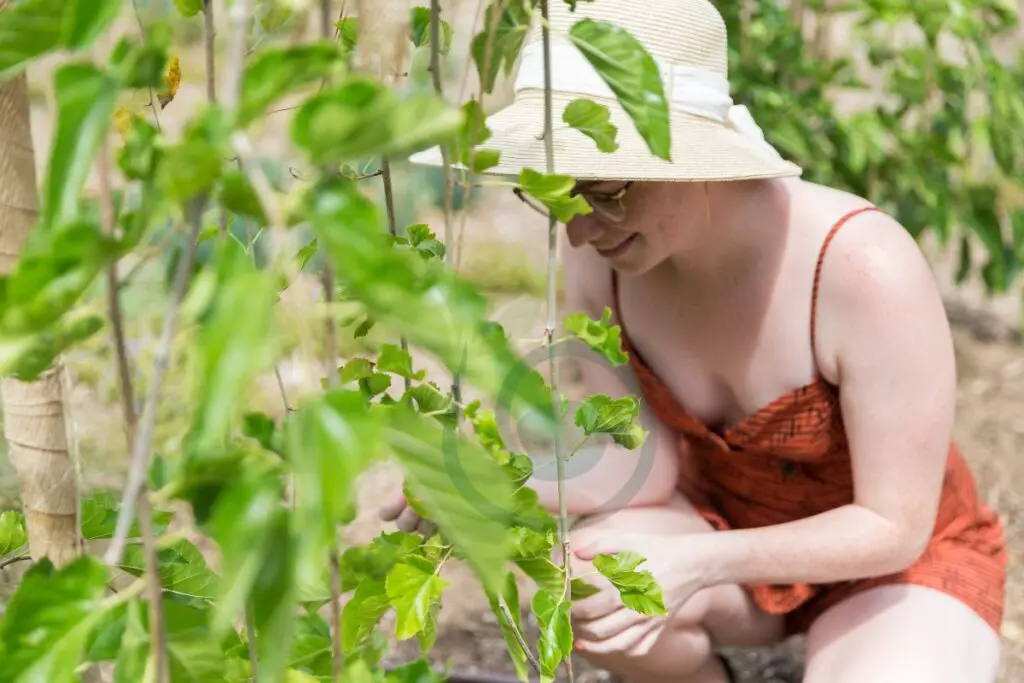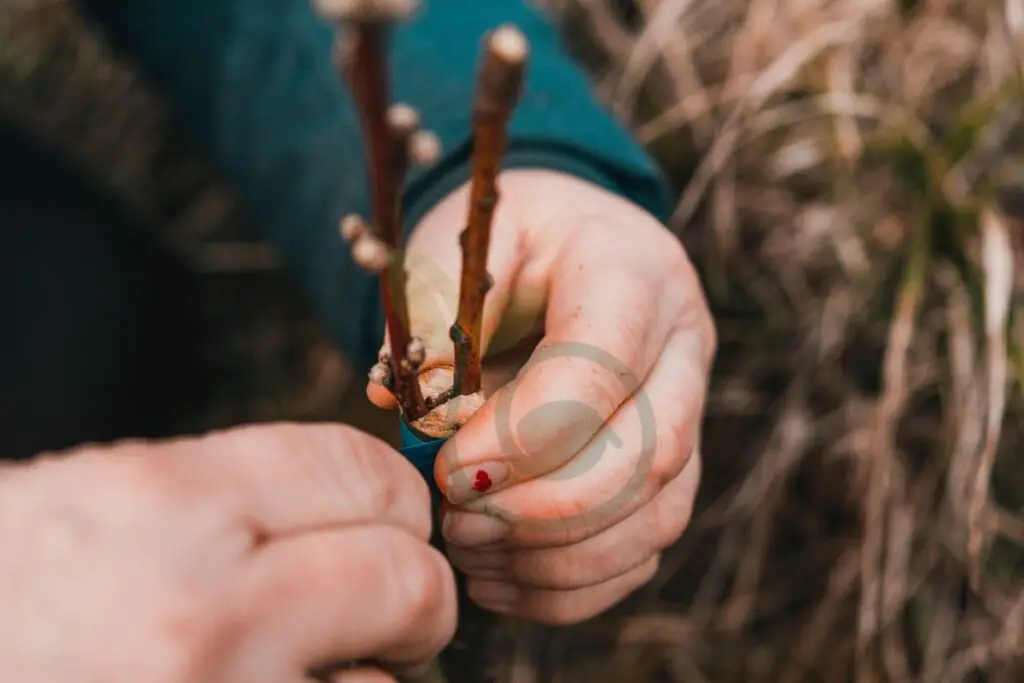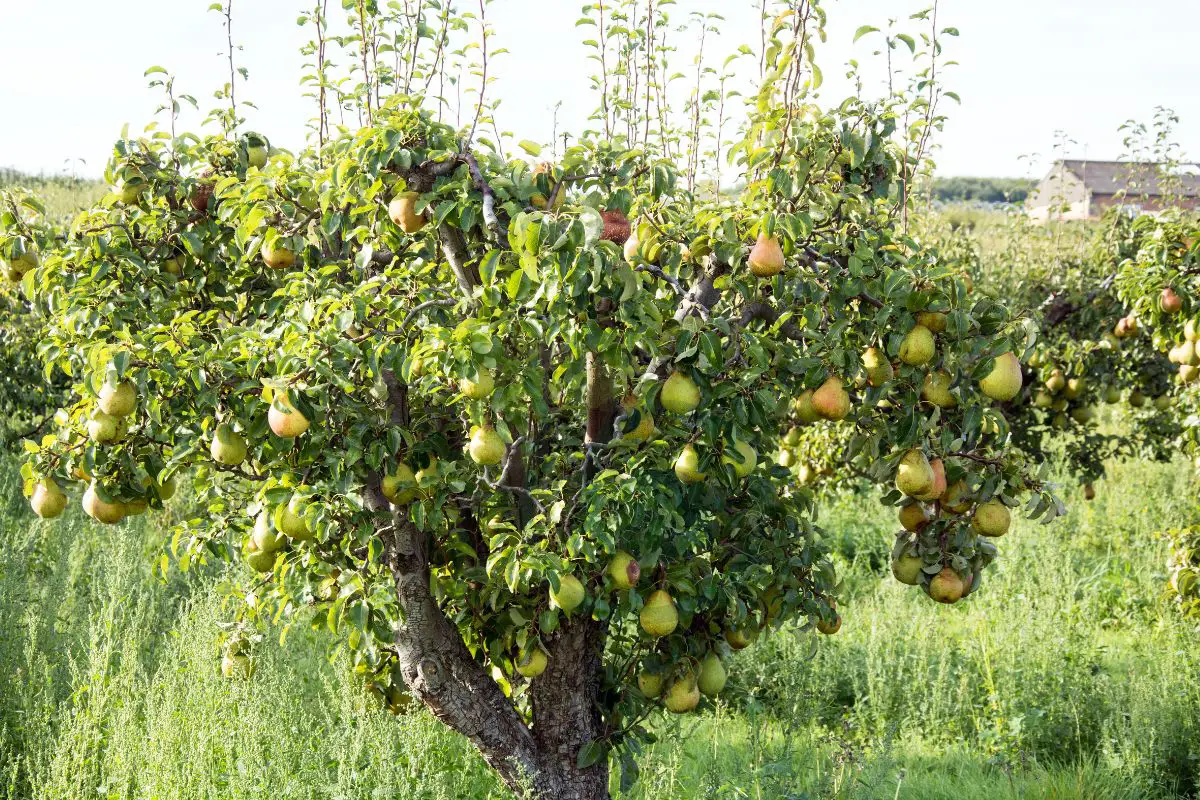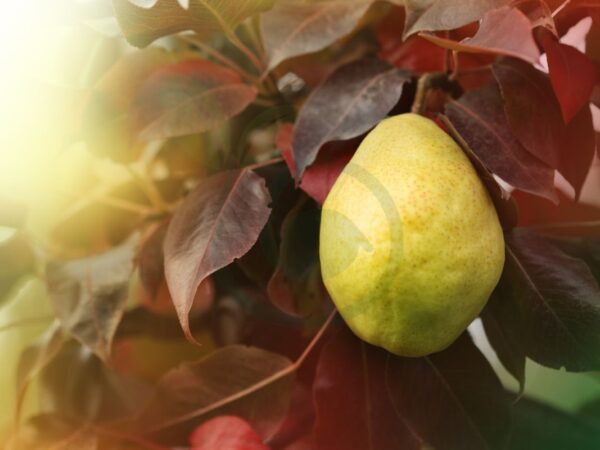Ever wondered how to ensure your pear trees thrive and bear delicious fruits? Taking care of pear trees is not just about watering them regularly. From pruning techniques to pest control, there's a lot that goes into maintaining these fruit-bearing beauties. So, are you ready to discover the secrets to nurturing flourishing pear trees in your garden?
Key Takeaways
- Choose pear tree varieties that are well-suited to your climate and soil conditions to ensure successful growth.
- Plant pear trees in well-draining soil and provide adequate sunlight for optimal development.
- Monitor essential growth factors like watering, soil pH, and temperature to promote healthy pear tree growth.
- Fertilize pear trees regularly with a balanced fertilizer and apply mulch to retain moisture and suppress weed growth.
- Prune pear trees annually to maintain shape, improve air circulation, and remove dead or diseased branches.
- Protect pear trees from animals like deer and rodents using physical barriers or repellents.
Choosing Pear Trees
Types Consideration
When selecting pear trees, it's crucial to pick the right variety that suits your climate and soil conditions. Consider dwarf or semi-dwarf apple trees if you have limited space in your garden. Research different pear tree types to find the one that aligns with your preferences. For instance, Bartlett pears are popular for their juicy texture and sweet flavor.
Climate Needs
Pear trees thrive in temperate climates with cool winters and mild summers. Make sure your pear tree gets enough chilling hours during winter for proper fruit production. Shielding your pear tree from late spring frosts is essential to prevent damage to blossoms, ensuring a successful harvest season ahead.
Space Planning
Allow sufficient space between pear trees for adequate air circulation and sunlight exposure. When deciding where to plant them, factor in the mature size of the trees so they have ample room to grow without restrictions. It's advisable to position pear trees away from structures or other plants that could impede their growth potential.
Planting Pear Trees
Timing Right
Plant pear trees in early spring or late fall when the soil is workable. Avoid extreme weather conditions like heatwaves or freezing temperatures. Consider the dormant period for pruning and maintenance.
When planting your pear tree, timing is crucial to ensure its successful growth. Early spring and late fall are optimal periods, as they offer suitable conditions for the tree to establish itself without being stressed by harsh weather extremes. By avoiding planting during heatwaves or freezing temperatures, you provide your pear tree with a conducive environment for root development and overall health.
Preparing ahead by considering the dormant period of pear trees will help you plan essential tasks such as pruning effectively. This foresight allows you to carry out maintenance practices at the most beneficial times, promoting the long-term well-being of your pear tree.
Soil Preparation
Before planting a pear tree, it's essential to prepare the soil properly by removing any weeds, rocks, or debris that could hinder its growth. Testing the soil pH ensures it falls within the ideal range for pears.
To give your pear tree a solid foundation for growth, start by clearing its planting site of any obstacles like weeds, rocks, or debris that could impede root development. By creating a clean environment free from competition and obstructions, you set up your pear tree for success right from the beginning.
Checking and adjusting soil pH levels guarantees that your pear tree has access to nutrients in an environment where it can thrive optimally. Incorporating organic matter like compost enhances fertility and drainage capabilities—providing an enriched growing medium that supports healthy root establishment.
Essential Growth Factors
Sunlight Exposure
When caring for pear trees, sunlight exposure is crucial. Pear trees thrive in full sun, so choose a sunny spot without large shade-producing structures or trees nearby. Monitor the sun's movement to ensure your tree gets at least 6 hours of direct sunlight daily.
Adequate sunlight helps with healthy growth and optimal fruit production. Without enough sun, pear trees may struggle to produce fruits or grow properly. For example, if planted near tall buildings that block sunlight, the tree might not thrive as expected.
Watering Needs
Proper watering is essential for the well-being of pear trees. To foster a strong root system, provide regular and deep watering once or twice weekly. Ensure the soil remains moist but not waterlogged by adjusting watering frequency based on weather conditions.
Maintaining proper moisture levels ensures that nutrients reach the roots effectively for healthy growth and development. If overwatered or underwatered, pear trees can suffer from issues like stunted growth or fruit drop.
Soil Quality
The quality of soil directly impacts the health and growth of pear trees. Opt for well-draining soil to prevent waterlogging and root rot issues that can harm your tree's overall health. Conduct regular soil tests to identify any nutrient deficiencies and amend them accordingly.
Nutrient-rich soil provides essential elements needed for healthy growth in pear trees such as nitrogen, phosphorus, and potassium which are vital for fruit production too.
Fertilizing and Mulching
Fertilizer Types
Home gardeners caring for pear trees should use a balanced fertilizer made for fruit trees. This type of fertilizer provides the necessary nutrients crucial for the healthy growth of pear trees. Apply this fertilizer in early spring before new growth begins to support overall tree health.
It is essential to reapply the fertilizer in late summer specifically to aid in fruit development. Following the manufacturer's instructions on application rates and methods is vital to ensure proper nourishment for your pear tree throughout its growing season.
Mulching Benefits
Mulch offers several benefits when taking care of pear trees at home. Applying organic mulch around the base helps retain moisture, preventing soil from drying out quickly. Moreover, mulch acts as a barrier against weed growth, keeping your tree area neat and tidy.
Furthermore, mulch plays a crucial role in regulating soil temperature around the roots of your pear tree. By protecting them from extreme temperatures, mulch contributes significantly to maintaining stable conditions that foster healthy root development.
Pruning Pear Trees
Pruning Time
Prune pear trees in late winter or early spring to encourage healthy growth. Remove dead, damaged, or crossing branches to maintain tree vigor and prevent diseases from spreading. Shaping the tree by selectively pruning helps improve air circulation within the canopy.
To ensure proper growth and fruit production, prune during dormancy while being mindful of new growth emergence. By following these guidelines, you can enhance the overall health of your pear tree and promote optimal fruit development.
- Pros:
- Enhances air circulation
- Prevents disease spread
- Improves overall tree health
Techniques
Utilize clean and sharp pruning tools for precise cuts that minimize damage to the tree. Employ thinning cuts to eliminate overcrowded branches and allow better light penetration into the canopy. When training young pear trees, use appropriate methods like central leader or open center pruning for structural integrity.
By employing correct techniques such as thinning cuts and proper training methods, you can shape your pear tree effectively while ensuring its long-term health and productivity.
- Use sharp tools for clean cuts.
- Practice thinning cuts for better light penetration.
- Train young trees using central leader or open center pruning techniques.
Disease Prevention
Regularly inspect your pear tree for common diseases like fire blight, pear scab, and powdery mildew to catch any issues early on. Maintain good sanitation practices by promptly removing fallen leaves and fruit debris which can harbor pathogens that cause diseases such as fire blight.
By monitoring your pear tree's health regularly and implementing preventive measures like good sanitation practices along with timely fungicide applications when needed, you can safeguard your trees against common diseases effectively.
- Cons:
Protecting from Animals
Protecting pear trees from animals is crucial to ensure their growth and fruit production. One way to achieve this is by setting up physical barriers around the tree. Tree guards or netting can safeguard your pear tree from browsing animals like deer or rabbits. Using tree wraps during winter helps prevent sunscald and frost damage on the trunk, promoting the tree's overall health.
Staking young pear trees securely is also essential in providing support against strong winds or storms that could potentially harm the tree. By ensuring proper staking, you help maintain the stability of the tree as it grows, reducing its vulnerability to external factors. Properly secured young trees have a better chance of thriving and producing healthy fruits for years to come.
Utilizing repellents is another effective method to protect your pear tree from pests. Natural repellents such as garlic spray or predator urine can deter harmful insects and animals from causing damage to your tree. Hanging reflective objects or wind chimes near the pear tree serves as a simple yet effective way to scare away birds and other creatures that may pose a threat.
Motion-activated sprinklers are another innovative tool that can startle pests and discourage them from approaching your precious pear tree. These sprinklers activate when they detect movement, effectively keeping unwanted visitors at bay without causing any harm to them. Incorporating these motion-activated devices into your garden not only protects your plants but also ensures a safe environment for wildlife around your property.
Common Problems and Solutions

Fire Blight
Fire blight is a common issue that pear trees face. Symptoms include wilting, blackened branches, and oozing cankers. To tackle this problem, prune infected branches at least 12 inches below visible symptoms. Remember to disinfect your tools between cuts to prevent spreading the disease further. After pruning, ensure you destroy the pruned material by burning it or disposing of it properly.
- Pros: Pruning helps control the spread of fire blight.
- Cons: Severe cases may require professional intervention.
Pests are another challenge for pear trees. Keep an eye out for common pests like aphids, codling moths, and pear psylla. If you notice small infestations, use insecticidal soaps or horticultural oils to control them effectively. Consider introducing beneficial insects such as ladybugs or lacewings to naturally manage pest populations on your tree.
- Monitor your pear tree regularly for signs of pests.
- Use organic pest control methods before resorting to chemicals.
Over and Underwatering Signs
Understanding the signs of overwatering and underwatering is crucial in caring for your pear tree properly. Overwatering can lead to issues like yellowing leaves, wilting despite moist soil, or root rot developing in the tree's roots. On the other hand, underwatered trees show symptoms such as drooping leaves, dry soil around the base of the tree, and an overall lack of vigor in growth.
- Key Information: Adjust watering practices based on specific needs.
Remember that finding a balance in watering is key; observe how your tree responds after adjusting its water intake.
Harvesting and Storing Pears
Harvest Time
To ensure you pick ripe pears, look at their color, size, and firmness. Different pear types ripen at different times. When harvesting, gently twist or lift the pears to prevent harm to the fruit or tree branches.
It's vital to check for signs of readiness before harvesting your pears. By keeping an eye on their color changes from green to yellow or red (depending on the variety), you can gauge their maturity level accurately. Assessing firmness by lightly pressing near the stem helps determine if they are ready for picking.
Storage Methods
Once harvested, store your pears in a cool and dark spot with proper airflow; this will help prolong their freshness. Avoid placing them close to fruits that emit ethylene gas since it can speed up ripening and spoilage processes. Refrigerating some pear varieties can extend their shelf life significantly.
When storing harvested pears, remember that ventilation is crucial as it prevents moisture buildup which could lead to mold growth. Keeping them in a well-ventilated area ensures they stay fresh longer without developing any unwanted mold spots.
Remember that not all pear varieties require refrigeration; some may fare better stored at room temperature but away from direct sunlight or heat sources.
Propagation Methods

Grafting Techniques
Grafting is a common method to propagate specific pear tree varieties. Techniques like whip-and-tongue or cleft grafting are widely used. It's best to practice grafting in late winter or early spring when the trees are dormant. Proper alignment and secure attachment of the scion (desired variety) and rootstock are crucial for successful grafting.
When grafting pear trees, ensure you have the right tools, including a sharp knife and grafting tape. Make precise cuts on both the scion and rootstock for a snug fit. Remember that successful grafts depend on proper care after the procedure, such as protecting them from harsh weather conditions.
Seed Growing
Another way to propagate pear trees is through seed growing. Collect seeds from ripe pears by removing any pulp or coating around them carefully. To prepare seeds for germination, stratify them by placing them in a moist medium at low temperatures for a specific period—typically several weeks to mimic natural winter conditions.
After stratification, plant the pear tree seeds either in containers indoors or directly in well-prepared soil outside. Ensure they receive adequate sunlight, water, and nutrients during their growth period until they germinate successfully.
You've now got the lowdown on pear tree care from start to finish. Choosing the right tree, planting it with care, ensuring it gets all the essential nutrients, and protecting it from harm are all crucial steps in nurturing those delicious pears. Remember, just like you need a bit of TLC to thrive, so do your pear trees.
Now that you're armed with this knowledge, go out there and give your pear trees the love they deserve. Whether it's pruning them at the right time or keeping pesky critters at bay, you've got what it takes to ensure a bountiful harvest. So roll up your sleeves and get ready to enjoy the fruits of your labor!
Frequently Asked Questions
How do I choose the right pear tree for my garden?
When choosing a pear tree, consider factors like your climate zone, space availability, and desired fruit type. Opt for disease-resistant varieties suitable for your region to ensure successful growth.
What is the best time of year to plant pear trees?
The ideal time to plant pear trees is in late winter or early spring when the tree is dormant. This allows the roots to establish before the growing season begins, promoting healthy growth.
How often should I fertilize and mulch my pear trees?
Fertilize young pear trees annually in early spring with a balanced fertilizer. Apply a 2-4 inch layer of organic mulch around the base of the tree each spring to retain moisture and suppress weeds.
Why is pruning important for pear trees?
Pruning helps maintain tree shape, improve air circulation, and promote fruit production by removing dead or crowded branches. It also aids in preventing diseases and ensuring sunlight reaches all parts of the tree.
How can I protect my pear trees from animals like deer and birds?
Use physical barriers such as fencing or netting to deter animals from accessing your pear trees. Scare tactics like reflective tape or noise-making devices can also help keep unwanted visitors away from your precious fruits.
Image Source: Paid image from CANVA



